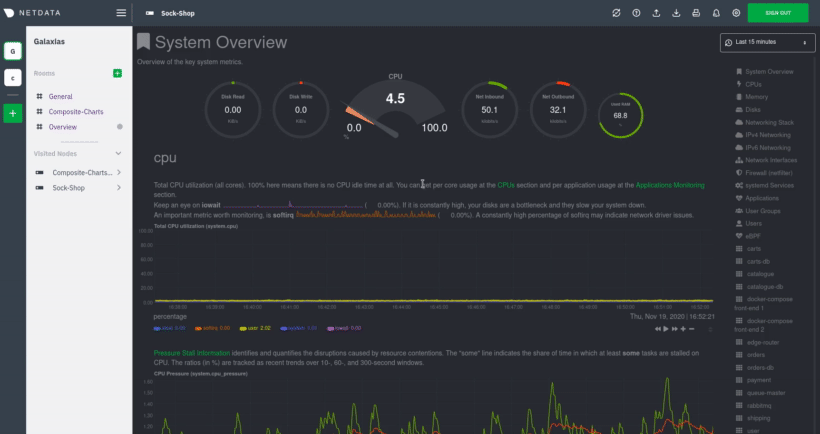Update the Netdata Agent
By default, the Netdata Agent automatically updates with the latest nightly or stable version depending on which you installed. If you opted out of automatic updates, you need to update your Netdata Agent to the latest nightly or stable version. You can also enable or disable automatic updates on an existing install.
💡 Looking to reinstall the Netdata Agent to enable a feature, update an Agent that cannot update automatically, or troubleshoot an error during the installation process? See our reinstallation doc for reinstallation steps.
Before you update the Netdata Agent, check to see if your Netdata Agent is already up-to-date by clicking on the update icon in the local Agent dashboard's top navigation. This modal informs you whether your Agent needs an update or not.

Determine which installation method you used#
Starting with netdata v1.33.0, you can use Netdata itself to determine the installation type by running:
If this produces no output, you have an older install and will have to manually look in the Netdata config directory.
If you are not sure where your Netdata config directory is, see the configuration doc. In
most installations, this is /etc/netdata.
Use cd to navigate to the Netdata config directory, then use ls -a to look for a file called .install-type.
- If the
.install-typefile doex not exist, look for a file in the same directory called.environment.- If the
.environmentfile does not exist, then you have a ‘custom’ install. - If the
.environmentfile does exist, then you have either a ‘static’ or ‘build’ install.
- If the
- If the
.install-typefile does exist, check it’s contents withcat .install-type.- The value of the
INSTALL_TYPEkey indicates what type of install you have.
- The value of the
The exact update method to use depends on the install type:
- Installs with an install type of 'custom' usually indicate installing a third-party package through the system package manager. To update these installs, you should update the package just like you would any other package on your system.
- Installs with an install type starting with
binpkgor ending withbuildorstaticcan be updated using our regular update method. - Installs with an install type of 'oci' were created from our official Docker images, and should be updated using our Docker update procedure.
- macOS users should check our update instructions for macOS.
- Manually built installs should check our update instructions for manual builds.
Updates for most systems#
In most cases, you can update netdata using our one-line installation script. This script will automatically run the update script that was installed as part of the initial install (even if you disabled automatic updates) and preserve the existing install options you specified.
If you installed Netdata using an installation prefix, you will need to add an --install option specifying
that prefix to this command to make sure it finds Netdata.
❗ If the above command fails, you can reinstall Netdata to get the latest version. This also preserves your configuration in
netdata.confor other files.
Docker#
Docker-based installations do not update automatically. To update an Netdata Agent running in a Docker container, you must pull the latest image from Docker Hub, stop and remove the container, and re-create it using the latest image.
First, pull the latest version of the image.
Next, to stop and remove any containers using the netdata/netdata image. Replace netdata if you changed it from the
default.
You can now re-create your Netdata container using the docker command or a docker-compose.yml file. See our Docker
installation instructions for details.
macOS#
If you installed Netdata on your macOS system using Homebrew, you can explicitly request an update:
Homebrew downloads the latest Netdata via the formulae, ensures all dependencies are met, and updates Netdata via reinstallation.
If you instead installed Netdata using our one-line installation script, you can use our regular update instructions to update Netdata.
Manual installation from Git#
If you installed Netdata manually from Git, you can run that installer again to update your agent. First, run our automatic requirements installer, which works on many Linux distributions, to ensure your system has the dependencies necessary for new features.
Navigate to the directory where you first cloned the Netdata repository, pull the latest source code, and run
netdata-install.sh again. This process compiles Netdata with the latest source code and updates it via reinstallation.
⚠️ If you installed Netdata with any optional parameters, such as
--no-updatesto disable automatic updates, and want to retain those settings, you need to set them again during this process.
Control automatic updates#
Starting with Netdata v1.34.0, you can easily enable or disable automatic updates on an existing installation using the updater script.
For most installs on Linux, you can enable auto-updates with:
and disable them with:
For static installs, instead use:
and: